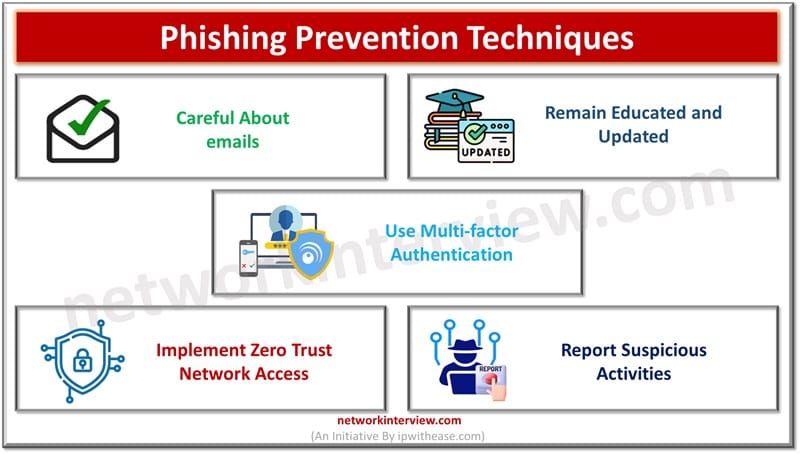
Phishing Prevention Techniques for a Remote Workforce
The amount and intensity of cybercrimes is growing exponentially based on social engineering techniques as humans are the weakest link in the chain of security and easy target of compromise. This is further fueled by remote operations. Most companies focus on spending money and time in implementing best of breed systems to secure networks but they forget that humans can’t be programmed to respond in a specific manner where fraudsters gain the advantage.
In today’s topic we will learn about phishing, common types of phishing and how to prevent phishing for remote workers.
What is Phishing?
Phishing is a social engineering technique which is usually performed using an email as a medium to trick a user into entering credentials data, click on malicious links which install malware on the victim system or take him to a malicious website for downloading malware or any other infected software meant to steal personal information. Latest Verizon report indicated that ‘90% of security incidents and data breaches are result of phishing attacks’
Phishing Attack Types
Phishing attacks are of various types as under:
- Email Phishing – is the most common form of phishing where fake mails are presented to the victim with mention of a piece of personal information of user interest
- Spear Phishing – Specific individuals or organizations are targeted here.
- Clone Phishing – is creation of exact copy of legitimate emails but with fictitious or dubious links
- Vishing – uses phone and pretend to be legitimate caller and try to gain personal information over phone
- Smishing – SMS based phishing uses text messages asking personal information
- Whaling – targeted attack on high profile executives or individuals such as CEOs, government officials etc. to get personal information or money transfer.
- Zishing – Video conferencing platforms such as MS-Teams, zoom etc. users are targeted here. The users have been sent a fake meeting invite requesting to join the link. They mimic actual meeting platform sites and trick users into sharing their personal information or downloading malware.
Phishing Prevention for Remote Workers
- Careful About emails – always check sender email address before clicking any links or open any emails that come from unknown sources. If the message seems suspicious, always check the official website or call them.
- Remain Educated and Updated – keep yourself updated about the latest information on phishing techniques. Undertake refresher courses on cybersecurity provided by organizations.
- Use Multi-factor Authentication – for work and banking etc. enable MFA to add an additional layer of security to your sensitive accounts.
- Implement Zero Trust Network Access (ZTNA) – each and every user and device are verified regardless of its location before being granted access to the corporate network. Remote workers can access organization resources in a secure manner without the risk of compromise.
- Report Suspicious Activities – report all phishing attempts to your IT and cybersecurity team immediately. So that they can investigate and take the required action as needed.
Related FAQs
Q.1 How can I recognize a phishing attempt?
Look for these warning signs:
- Suspicious sender address: Email domains that don’t match the official domain (e.g., “support@paypal-secure.com” instead of “support@paypal.com”).
- Urgent or threatening language: Messages claiming your account will be suspended unless you act immediately.
- Poor grammar and spelling: Legitimate companies rarely send emails with typos or awkward phrasing.
- Unexpected attachments or links: Be cautious of unsolicited files or URLs.
Q.2 What should I do if I suspect I’ve been phished?
- Stop engaging: Avoid clicking any further links or downloading attachments.
- Change passwords immediately: Use a strong, unique password for the compromised account.
- Notify relevant parties: Inform your IT department, bank, or other affected organizations.
- Monitor accounts: Check for unauthorized transactions or activity.
- Report the phishing attempt: Forward phishing emails to organizations like reportphishing@apwg.org or the company being impersonated.
Q.3 Are there tools to help protect against phishing?
- Email filtering tools: Identify and block suspicious emails before they reach your inbox.
- Browser extensions: Many browsers have phishing protection settings to warn you about fraudulent websites.
- Anti-phishing software: Comprehensive solutions that detect and prevent phishing attempts.
- Password managers: Generate and store unique passwords, preventing reuse across sites.
- DNS-based security tools: Block access to known malicious sites.
Tag:Security



